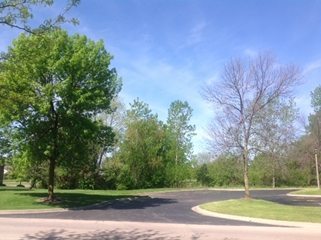Ash Trees – Where Are We Now?
Written by: Tony Arnoldi, Board Certified Master Arborist WI-0102B
Posted: 2016 | Emerald Ash Borer | Spring
Spring has come – heralding the beginning of another growing season. As the trees develop new leaves, the insects that feed on them emerge also to begin their cycle of life all over again. In the case of Emerald Ash Borer, they have been spending the winter as larvae, then transforming into pupae a little later in spring, and finally emerging as adults beginning in May. They continue to emerge for most of the summer. The adults quickly mate and lay eggs on ash trees to start the next generation of EAB.
This winter, the last community in the Milwaukee Metro area to discover EAB: Brookfield, was added as infested territory. There is no longer any doubt that it has permeated our entire area.
Many ash trees look “great” yet. However, if eggs had been laid on them in the last few years, accumulated damage caused by the larvae eating their way through the wood may have reached a point where the leaf-out by the tree could be hindered. Or some branches may not leaf out at all.
Because of all of this, going forward, choosing ash for protective treatment is getting more challenging. One must have the aid of seeing the current years leaves develop fully to help read the tree’s current energy level, and the projected amount of damage the tree may be carrying. It is possible to save trees with some amount of accumulated damage. If the tree looks great in mid-summer and does not have any complicating factors such as old trunk or bark damage, it may be a good candidate for treatment. There is risk in treating any ash tree, for damage already done inside of it may manifest well after treatment is started. Trees closer to known areas of high infestation (eg. Newberg, Oak Creek) are at greater risk because there may be a greater number of larvae already started in the tree. It is amazing that it can take 5 years or more for this damage to manifest and be noticed by even trained eyes. This is one of the great difficulties in convincing ash owners that the danger is so imminent.
Yet, there are many ash trees that could be saved. Saving them is work for a trained Certified Arborist who can better cull out those that should not be chosen. Focusing the tree budget on selecting those that are good candidates will help preserve the diversity and integrity of many landscapes. Better decisions for removal and replacement can also be made with the help of a Certified Arborist.
The years of adding new ash trees for protection are winding down fast. By the time this is painfully obvious to your average tree owner it will be too late. Being proactive has never been so imperative. Contact us today to arrange an assessment of your ash collection.




